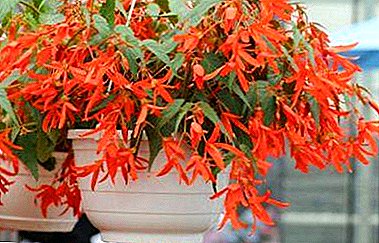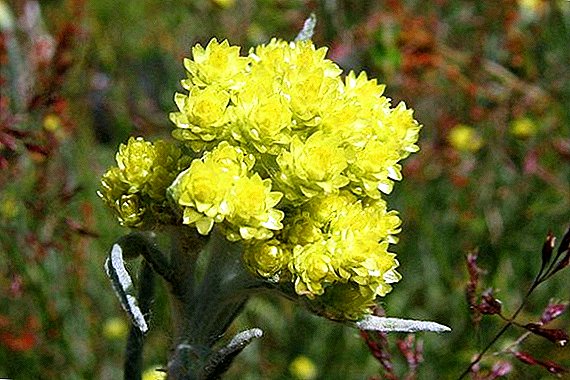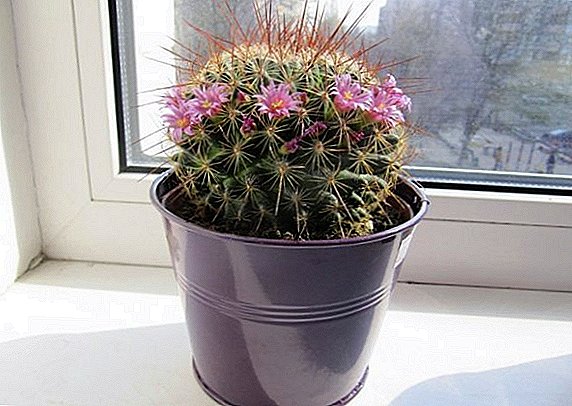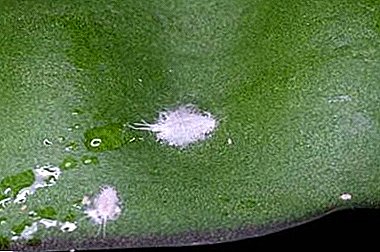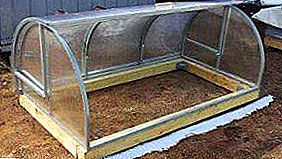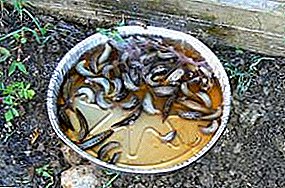
Orchid is an exotic ornamental flower, which is loved for its incredible beauty and tenderness of inflorescences. Phalaenopsis is home to Japan and China. Today, orchids are common on all continents except Antarctica. In nature, they grow on branches and crowns of trees to be closer to the sun.
There are a lot of orchid species, but known among flower growers - phalaenopsis, cattley, dendrobiums, vandas, pafiopedilums, dracules, bulbofillumy, brassii, anhrekums, brassavoli, calanty, cambria, masdevallia, encyclias, celogins, erantes.
A popular flower is a greenhouse and requires special care.. Therefore, home gardeners need to be treated with trepidation with an overseas guest and know the subtleties of care so that a delicate flower pleases with a variety of colors. But what to do if some time after the housewarming on the windowsill the orchid flowers start to wither, dry and fall off?
Why do buds dry out? The main reasons are: possible stress, a pot with a flower, poor lighting or, on the contrary, excess sunlight, overcooling or overheating, drafts in the room, improper watering of the plant. The situations are different, but there is one algorithm for saving decorative beauty: first aid is needed, otherwise the orchid will die.
Hypothermia
 Hypothermia is a common cause of inflorescence. If you purchased an orchid in the store in the winter and carry the plant home, then remember:
Hypothermia is a common cause of inflorescence. If you purchased an orchid in the store in the winter and carry the plant home, then remember:
Transportation in the winter causes hypothermia. Ambulance: pack the plant in cellophane and paper. Packed tender orchid tolerates frost for no more than 15 minutes.
Causes hypothermia and draft when ventilated. It would seem that the resuscitation of the plant is simple: exclude airing. But the complexity of this step lies in the fact that the tropical guest does not tolerate a foulness and cannot do without proper ventilation.
Important! The orchid needs airing. But it is unacceptable to leave a flower in a draft. In the summer, take the orchid to the street or balcony.
Summer air baths are helpfulbut remember that cold nights will ruin a naughty heat-loving flower. And what to do if preventive measures did not help, and the leaves fell off? Recommendations step by step:
- wilted flowers should be eliminated;
- move the plant to a warmer place;
- eliminate drafts, install gentle ventilation;
- leave the plant alone; it does not need transplantation.
Stress: changing conditions
Moving, changing the weather or transferring an orchid from one window sill to another - all these factors are stressful for an exotic pet. If you have determined the cause and have already made the diagnosis, the first-aid measures for the green friend are as follows:
- create a comfortable environment for the content;
- observe temperature conditions and watering schedule;
- Do not replant the plant!
Spraying: good or harm?
 Spray the orchid daily, but consider a few nuances. If the air in the apartment is dry, use a humidifier. To prevent the flowers from drying out once a month, bathe the orchid under the shower, wipe the leaves dry after water treatments. To spraying benefit, follow the rules:
Spray the orchid daily, but consider a few nuances. If the air in the apartment is dry, use a humidifier. To prevent the flowers from drying out once a month, bathe the orchid under the shower, wipe the leaves dry after water treatments. To spraying benefit, follow the rules:
- Water temperature for spraying is two degrees higher than indoors.
- If the temperature in the room is below 20 degrees, spray less often or exclude water treatments.
- Spray in the morning.
- Do not spray the flower in direct sunlight, otherwise there will be a burn!
- Spraying flowers is undesirable to avoid stains on them and premature fall.
If the prevention did not help, and the flowers began to fall:
- Reduce the number of sprays.
- Remove faded buds.
- Normalize the light mode.
- Ensure proper watering.
We offer to see an informative video about orchid spraying:
Humidity: optimal value
Lack of moisture or overabundance is the most common cause of problems. An acute lack of moisture occurs if, for some reason, stopped watering. In this case, resuscitation can not be avoided!
Instructions for action in this case:
- Pour water into the basin at room temperature to a level of no more than 15-20 cm.
- Immerse in a basin of water and wait until the earth combs lick.
- Note that the leaves should be dry when immersed in the pelvis!
- If the earth lump is too limp, it is necessary to place the patient in a new pot.
Too wet content gives rise to another serious problem: phalaenopsis begins to rot. Affected by rot, the flower loses its foliage, the leaves become soft, the flowers fall.
Decay is always easier to prevent than to cure. If 90% of the plant is infected, it will die!
It is important to take action and eliminate the causes of rot in time:
 Remove the flower from the pot.
Remove the flower from the pot.- Rinse the roots under running warm water.
- Remove damaged roots, leaves.
- Eliminate wilted flowers.
- Treat sections with antiseptic.
- Leave to dry overnight.
- Replant the orchid in a new ground with a drainage layer.
- Water only after the soil has dried.
Orchid antiseptics: Fundazol, Fitosporin. Treatment of rot wounds: Chlorhexidine. After reading such detailed instructions, the question remains: how to properly water the orchid?
Correct watering
“I, too, science, water the flowers from the watering can!” - the novice grower exclaims. But experienced growers know that watering is an art. Water quality, composition and temperature determine the well-being of an orchid. Water from the tap is not suitable because of impurities of heavy metals.
Accepted practice - water settling for watering plants - in the case of a strange pet is not suitable, To clean the liquid, use a filter, distiller, boil and cool.
If it is not possible to boil or filter, acidification will help reduce the concentration of unnecessary calcium impurities. Apply oxalic acid, following the instructions on the preparation.
A competent schedule of watering orchids helps to avoid problems with waterlogging drying earthen clod. Note that the graph depends on the season, temperature and humidity in the room and the life cycle of the plant.
 During the active growing season, water the plants 2-3 times a week.. During flowering watering increase. The principle of watering is simple: watch out, the soil substrate is not dry and not overwetted. In winter, watering is reduced, but spraying does not stop.
During the active growing season, water the plants 2-3 times a week.. During flowering watering increase. The principle of watering is simple: watch out, the soil substrate is not dry and not overwetted. In winter, watering is reduced, but spraying does not stop.
How to water:
- using a watering can;
- immersion in the pelvis;
- shower;
- abundant spraying.
How much water is needed for watering? Water until the moisture starts to protrude from the holes in the bottom of the pots.. The best time for watering is early morning. Remember that the correct watering will help to avoid the difficulties caused by waterlogging and drying.
We offer a video about the correct watering of orchids:
Sunstroke: First Aid
Orchids are thermophilic, because they come from the tropics. This fact can not be ignored, but big mistake - leave the flower in direct sunlight, near a radiator or placed under the scorching air of an air conditioner. A couple of hours of such sunny and warm baths are enough to make trouble! The distress signal will come immediately: the flowers will fall off, the leaves will shrink!
What to do:
- Keep the orchid away from the source of the problem.
- Water after 2 hours.
- After another hour, spray the plant.
- Observe the correct watering mode.
Let there be light! Orchids need a lot of diffused light. With a lack of light, the leaves are drawn out, grow dull, the flowers perish.
Fluorescent lamps are suitable for additional lighting.. The minimum distance from the leaves - 5-7 cm! If there are too many bulbs, beware of overheating and sudden temperature changes when switching on and off.
Prevention - the key to success
 A fragile flower with a special charm is impossible not to love. Who has ever seen him - in love forever. To ambulance is not needed by the patient, in the end, a few recommendations:
A fragile flower with a special charm is impossible not to love. Who has ever seen him - in love forever. To ambulance is not needed by the patient, in the end, a few recommendations:
- The optimum temperature in summer is up to 25 degrees Celsius, in winter not lower than 16.
- Avoid temperature drops, the allowable differential without consequences - 5-6 degrees.
- Duration of daylight hours - from 12 hours.
- Pot choose by size.
- Humidity of air - 55-65%.
- Ventilate the room, but avoid drafts.
- Replant every 2-3 years.
- Water 2-3 times a week, depending on the season and the cycle of the plant.
- Spray moderately, avoiding the procedure in direct sunlight.
- Shower - no more than once a month.


 Remove the flower from the pot.
Remove the flower from the pot.